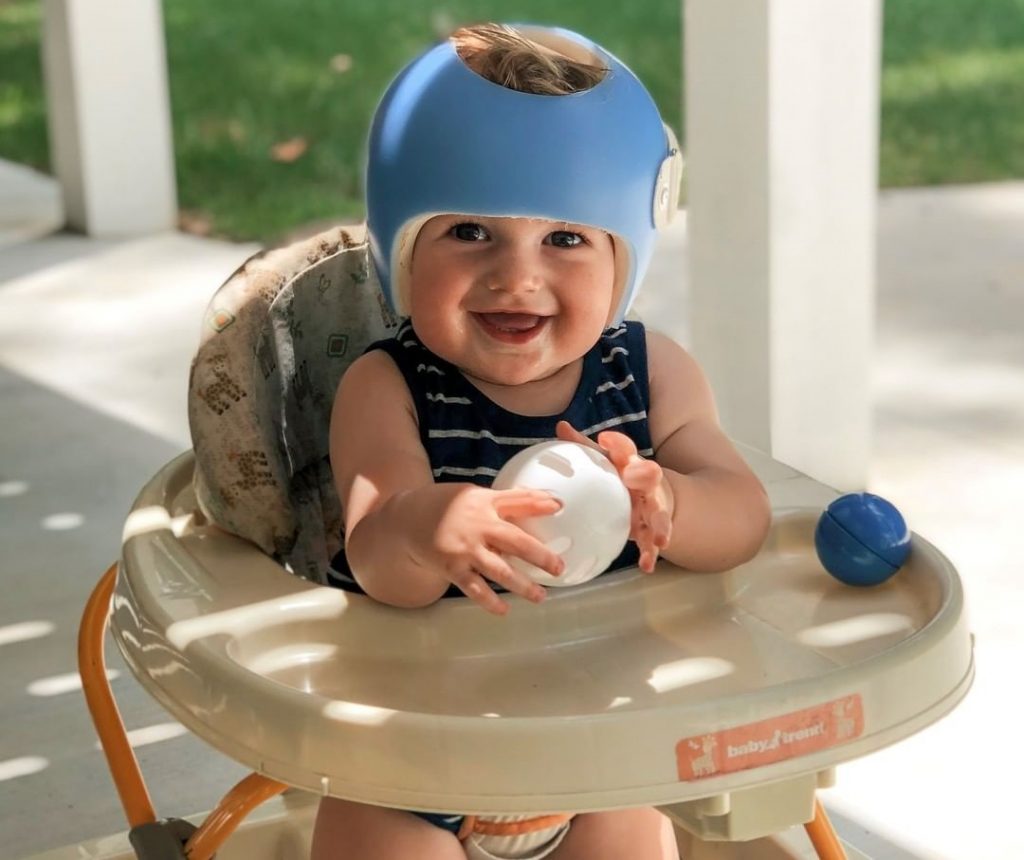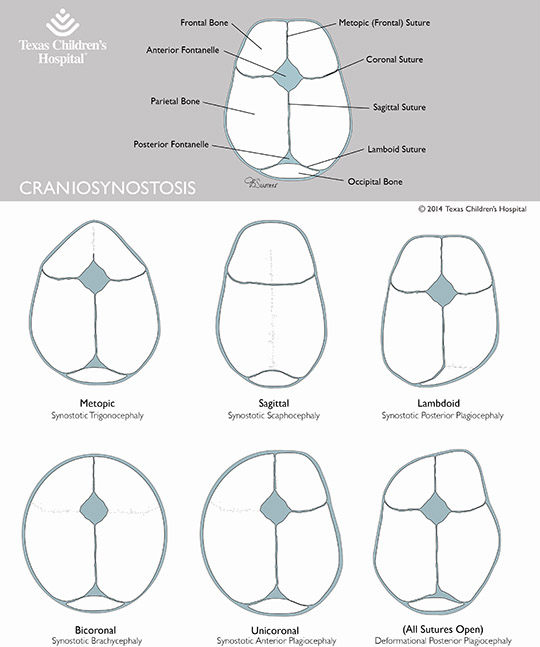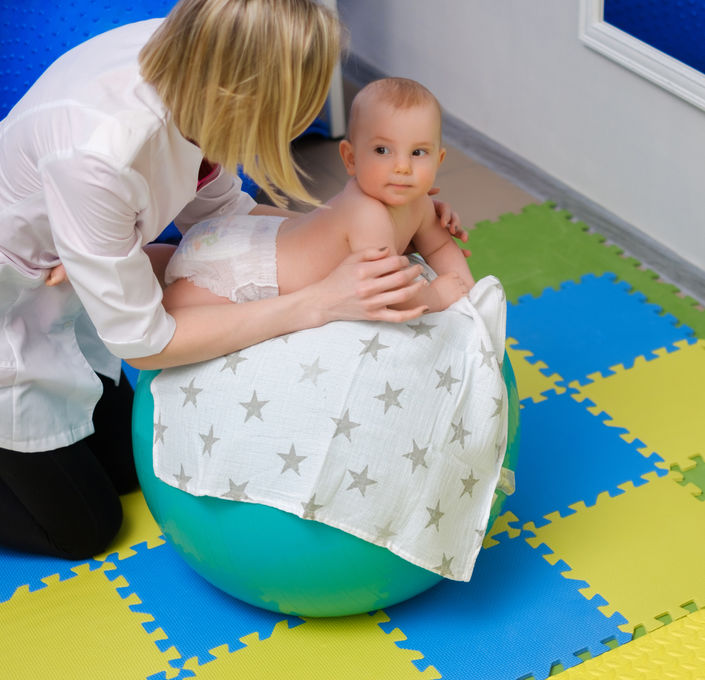Can an Orthotic Helmet Cure Craniosynostosis?
/

Deborah, the mother of new twin baby girls was frantic. Both babies were unreactive, floppy and their faces were becoming increasingly asymmetrical throughout their first two months of life. Even though, her doctor was not concerned, Deborah was desperate to find out what was really happening and began searching online only to discover that both her babies had symptoms of craniosynostosis. Her babies’ skulls fused together prematurely in utero causing this serious but treatable birth defect.
Ari The Brave, is now a cute three-year old whose parents noticed at birth that his forehead was very flat on one side of his face. The parents were told by their doctor that it was due to the way he was positioned in his mother’s womb. Ari’s mother did not give up pushing the doctors for answers to his severely misshapen head.
At three weeks of age he was sent for an ultrasound, as well as, x-rays and a CT scan at the local cranial center. Ari was diagnosed with right coronal craniosynostosis. He was originally scheduled for surgery at around nine months of age. However, his parents noticed over the next few months, that his head shape was changing dramatically at a quick pace. These smart parents went for a second opinion where Ari was diagnosed with not only coronal craniosynostosis but metopic, bilateral squamosal and partial sagittal fusions as well! A few weeks later, when Ari was five months old, he had the surgery. The surgeon exclaimed that in his forty years of operating, he had not seen such a pattern of fusing.
How is it that competent doctors do not notice this serious birth abnormality immediately at birth?
There are different types of craniosynostosis depending on which part of the skull bones are prematurely fused. This condition becomes more noticeable as the baby grows. Naturally, the skull needs to make more room for the growing brain. Since part of the skull fused together prematurely the brain shifts to the area of where it can expand. Craniosynostosis can range from mild to severe. This condition affects one in two thousand babies.
What is the most common symptom of craniosynostosis?
The sign that is the most common is an oddly shaped head at birth and no soft spot on the top of the baby’s head. There can be a raised firm edge at the point where the cranial sutures closed too early. Sutures are fibrous tissue that hold the bones of a baby’s skull together until the bones fuse completely usually by the age of two. These bone plates come together at seams or sutures. When this bony fusion happens too early, it is called craniosynostosis.
Sometimes the problem is in only one of the sutures but other times the situation involves more than one joint. The skull bone at the fused suture cannot grow properly while the brain keeps growing.
Can you describe a baby’s skull?
There are seven bones in a baby’s skull. Cranial sutures (joints), hold these seven bones together to form the skull. The sutures are supposed to remain flexible until the age of two so the brain can grow properly. In the front of the skull, these sutures intersect at the soft spot on top of the head called the fontanel.
You mentioned earlier that there are different types of craniosynostosis. Please specify some types.
1) Sagittal (scaphocephaly), the most common form, is the premature fusion of the sagittal suture running alone from the front to the back at the top of the skull. This condition forces the head to grow long and narrow.
2) Coronal craniosynostosis, is the premature fusion of one of the unicoronal sutures that run from each ear to the top of the skull. This type of craniosynostosis can cause flattening of the forehead and leads to the nose turning and the elevating of the eye socket to the affected part of the head. This will give the baby’s head a short and wide appearance with the forehead tilting forward.
3) Metopic or trigonocephaly craniosynostosis, is when the metopic suture runs from the top of the bridge of the nose through the mid-line of the forehead to the soft spot. This premature fusion will give a triangular shape to the forehead and widens the back part of the baby’s head.
4) Lambdoid (synostosis) is a rare type of craniosynostosis. The lambdoid suture is the joint that runs along the back of the head. When this uncommon symptom appears, it may cause one side of the baby’s head to appear flat, one ear to be higher than the other and the top of the head tilting to one side.
Can a child outgrow craniosynostosis?
In most of the cases surgery is a must. If caught early the surgery is less invasive and can be done endoscopically with the baby going home from the hospital the very next day.

Is there more than one surgical option?
Traditional open cranial surgery means that the surgeon removes the affected or closed suture and then remodels the skull. With endoscopic surgery, the suture is removed without cranial remodeling. The first procedure is a more complicated procedure because it reshapes the skull after it grows thicker. Surgery is optimally performed between the ages of two and ten months of age to “defuse” a specific bone suture. Each case is unique depending on which suture is the problem.
Is craniosynostosis like flat head plagiocephaly?
No, flat head syndrome is an acquired symptom through faulty positioning of the baby due to the “back to sleep” requirement. The baby could be spending too much time on one side of its head. Regular varying of the baby’s position, physical therapy and/ or helmet therapy helps to reshape the baby’s head and return it to a more normal form. On the other hand, craniosynostosis is a symptom that a baby is born with that was not acquired.
Can my baby wear a helmet instead of having surgery?
No, the only way to separate and remove bones that have fused together prematurely is surgery. Wearing a helmet without prior surgery, will not help bones that have already been fused.
Why would a baby be born with this condition?
Most of the time the reason for craniosynostosis in babies is not known. However, in other cases genetics could be the reason. An abnormality in one single gene can cause a genetic syndrome. Women who are treated for thyroid disease while they are pregnant, have an increased incidence of craniosynostosis. A fertility medication, clomiphene citrate, can increase the incidence of this skull disorder. No woman should stop taking her thyroid medication without her doctor’s consent. As far as the fertility drug, the lucky woman who took the drug may not have become pregnant without it.
Will my baby need a helmet after surgery?
The cranial baby helmet is a critical part of the treatment and cure of craniosynostosis. The helmet is crucial for two main reasons. A custom fitted helmet will protect the baby’s head after surgery until complete healing occurs. The helmet will also reshape any part of the head that still needs adjusting after the operation. It is vital that you be diligent about helmeting in order to avoid re-operating. The baby must where the helmet twenty-three hours of the day until you receive further instructions from the cranial therapy professional and finally the removal of the helmet permanently.
Must I visit a cranial specialist prior to the surgery?
About a week before the surgery, a visit to a cranial therapy center takes place. At that time, the baby is measured for the helmet so that it will be ready for fitting a day after the surgery or even while the baby is still in the hospital.
How long will my baby wear the helmet?
The helmet is worn until the baby’s first birthday. Each baby is unique, and the cranial therapist will make sure to explain both the length of time it will take and how often the helmet will need adjusting.
How will the baby’s brain function be affected by this condition, the surgery and the helmet therapy?
When this condition is treated correctly, brain function and development will be normal and there will be no limits to any of the baby’s activities. It is quite rare for neurological damage to occur and most children have normal brain and cognitive development. With early diagnosis, good cosmetic results will be accomplished as well.

What lessons can be learned from the stories of Deborah’s twins and Ari the brave?
Both parents in each story did not give in to their doctor’s initial flippant opinions. Deborah connected with the right people online, despite her doctors. Fifteen minutes after she posted pictures of her girls on an online forum for craniosynostosis, she got a response from a surgeon at the Mayo Clinic. Ari’s parents, emphasized, “For new parents out there, please get more than one opinion if you can. It is the best thing we did”. Trust your instincts!

Cranial Therapy Centers is the only early interventions cranial center in the United States which provides both helmet and manual therapy treatment. We are American Board for Certification in Orthotics, Prosthetics and Pedorthics Facility. Visit us in Lakewood NJ, at 1352 River Ave Unit 14, Lakewood NJ, 08701 or in Teaneck NJ at 1086 Teaneck Road Suite 3F, Teaneck, NJ 07666. You can also email us info@cranialtherapycenters.com
